Insects and Houseplants
- Scale
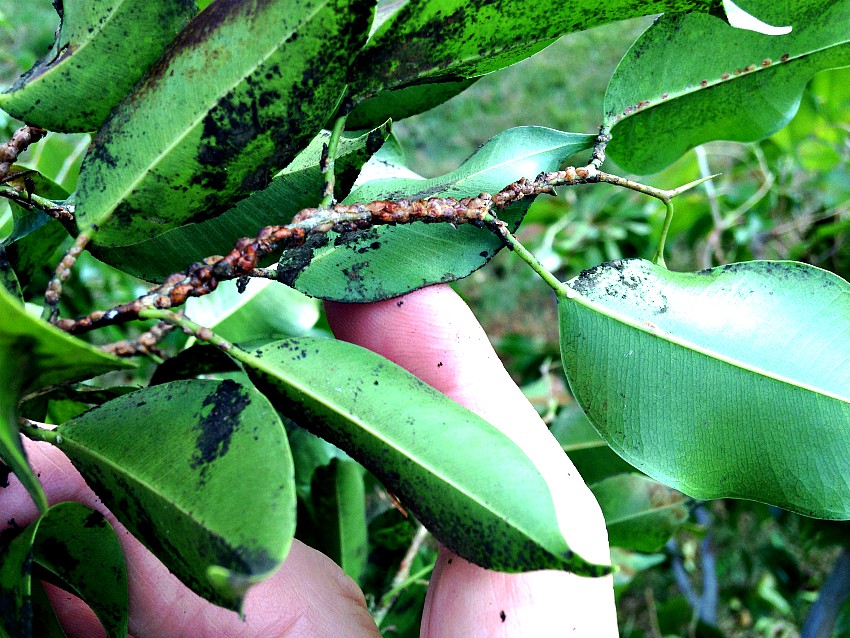 Scale on a Ficus Benjamina tree
Scale on a Ficus Benjamina treeScale infestations come in two forms, hard scale or soft scale. In either case, young insects can travel up several days before setting up a new home. They're even strong enough to drop off one plant and find another.
Hard Scale looks like tiny brown bumps measuring about 1/16th inch in diameter. You can easily spot their shells on the undersides of leaves or lined up along the stem.
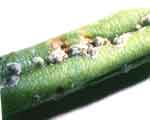
Once they find a suitable spot, they stick their mouth into a leaf or stem, tuck their legs under and start building a new protective shell. Insects live under these shells and feed on your plant while laying eggs for future generations. (Scratch shell with your fingernail or use a knife and it will pop free.)
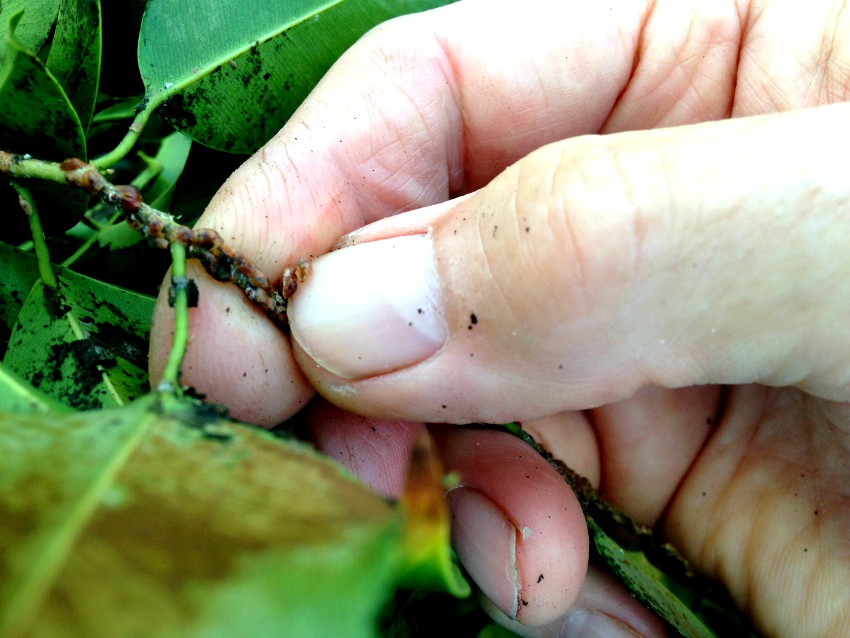
Hard Scale also has the ablility to establish new colonies on pots, tables, and even on the floor under the plant. You can find traces of scale by a "sticky" honedew substance they leave behind (similar to mealy bugs).
Are any of the surfaces around the infected plant sticky? If they are - there's active scale populations present.
Soft scale resembles mealy bugs. It's a white powdery substance usually found on the underside of leaves or down in the crevices between the leaves.
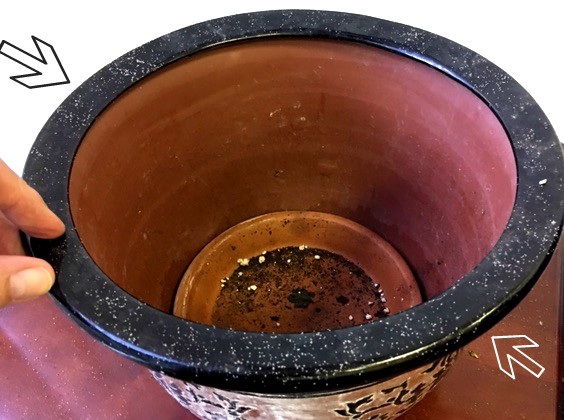 Check for a sticky spots around infected plants. This pot is sticky and sure enough - those tiny white specks on rim of the container are new colonies of scale.
Check for a sticky spots around infected plants. This pot is sticky and sure enough - those tiny white specks on rim of the container are new colonies of scale.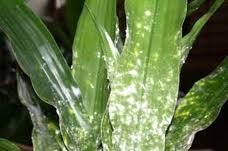 Soft Scale on a Dracaena Janet Craig
Soft Scale on a Dracaena Janet CraigLike mealy bugs, scale secrete a sticky "honeydew" substance that gives the leaves (and pots) a shiny look. This could be the first sign of trouble that you'll see. Called "honeydew", it turns into "black mold" and attracts ants.
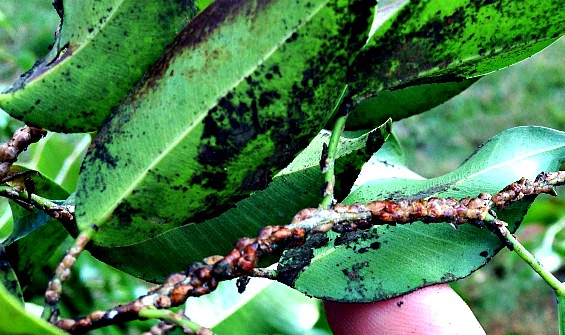 Honeydew on the underside of the leaves of a ficus tree that turned into balc mod.
Honeydew on the underside of the leaves of a ficus tree that turned into balc mod.
Controls for Scale
Scale have protected shells that that must be penetrated to effectively control them. Simply spraying the plant won't get to the insects.
I recommend using a soft bristle brush for dislodging their protective shell when spraying.
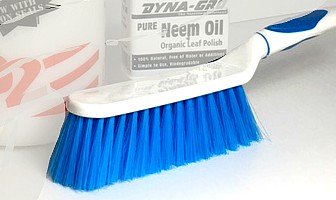
Neem Oil is an effective control for all types of scale. Mix 1 TBLS of Neem Oil in 1 quart of water in sprayer. Add a drop of dish soap to help the Neem Oil mix with water. Shake thoroughly.
Neem is effective for 12 hours after mixing.
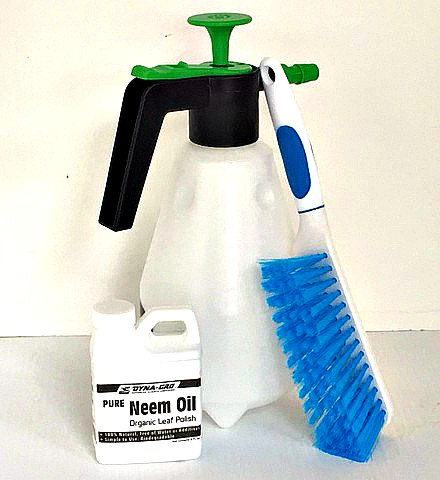
- Spray plant leaves thoroughly.
- Then, support the plant's leaves in one hand, gently scrub the leaf (top and bottom) with a soft bristle brush.
- Take time to scrub every leaf. Be sure to get into crevice where the leaf meets the stem.
- Spray pebbles.
- Spray grow pot.
- Rinse with clear water.
- Repeat once a week for 3 weeks.

